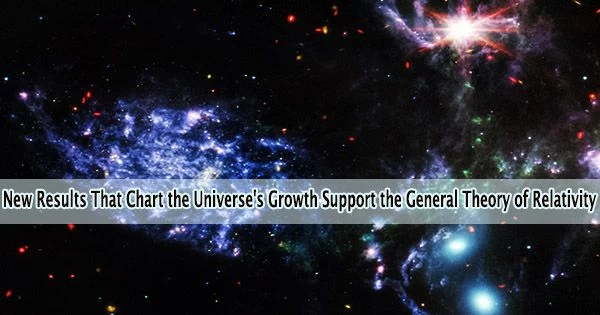The secrets of the cosmos have captivated people for ages. Modern cosmologists employ quantitative tools to glean insights into the universe’s evolution and structure, in contrast to ancient philosophers who imagined the universe’s origins. The creation of Albert Einstein’s general relativity theory at the turn of the 20th century led to the development of contemporary cosmology.
Currently, scientists working with the Atacama Cosmology Telescope (ACT) team have produced a ground-breaking new image that displays the most accurate map of dark matter distribution spanning a fourth of the total sky and stretching far into the cosmos.
Furthermore, it supports Einstein’s hypothesis of how large objects expand and bend light throughout the course of the universe’s 14 billion-year history.
“We have mapped the invisible dark matter across the sky to the largest distances, and clearly see features of this invisible world that are hundreds of millions of light-years across,” says Blake Sherwin, professor of cosmology at the University of Cambridge, where he leads a group of ACT researchers. “It looks just as our theories predict.”
Dark matter has proven difficult to identify since it doesn’t interact with light or other types of electromagnetic radiation, while constituting 85% of the universe and having an impact on its evolution. As far as we know dark matter only interacts with gravity.
To track it down, the more than 160 collaborators who have built and gathered data from the National Science Foundation’s Atacama Cosmology Telescope in the high Chilean Andes observe light emanating following the dawn of the universe’s formation, the Big Bang when the universe was only 380,000 years old.
We have mapped the invisible dark matter across the sky to the largest distances, and clearly see features of this invisible world that are hundreds of millions of light-years across. It looks just as our theories predict.
Professor Blake Sherwin
Cosmologists often refer to this diffuse light that fills our entire universe as the “baby picture of the universe,” but formally, it is known as the cosmic microwave background radiation (CMB).
The team studies how, similar to how light is bent when it passes through a magnifying glass, the gravitational force of massive, heavy things, such as dark matter, warps the CMB on its 14 billion-year journey to Earth.
“We’ve made a new mass map using distortions of light left over from the Big Bang,” says Mathew Madhavacheril, assistant professor in the Department of Physics and Astronomy at the University of Pennsylvania. “Remarkably, it provides measurements that show that both the ‘lumpiness’ of the universe, and the rate at which it is growing after 14 billion years of evolution, are just what you’d expect from our standard model of cosmology based on Einstein’s theory of gravity.”
Sherwin adds, “our results also provide new insights into an ongoing debate some have called ‘The Crisis in Cosmology,’” explaining that this crisis stems from recent measurements that use a different background light, one emitted from stars in galaxies rather than the CMB.
Results from these have raised questions about whether the mainstream model of cosmology is reliable since dark matter may not be as lumpy as it should be. However, the team’s most recent ACT data allowed them to precisely determine that the enormous masses visible in this image are the proper size.
“When I first saw them, our measurements were in such good agreement with the underlying theory that it took me a moment to process the results,” says Cambridge Ph.D. student Frank Qu, part of the research team. “It will be interesting to see how this possible discrepancy between different measurements will be resolved.”
“The CMB lensing data rivals more conventional surveys of the visible light from galaxies in their ability to trace the sum of what is out there,” says Suzanne Staggs, director of ACT and Henry DeWolf Smyth Professor of Physics at Princeton University. “Together, the CMB lensing and the best optical surveys are clarifying the evolution of all the mass in the universe.”
“When we proposed this experiment in 2003, we had no idea the full extent of information that could be extracted from our telescope,” says Mark Devlin, the Reese Flower Professor of Astronomy at the University of Pennsylvania and the deputy director of ACT. “We owe this to the cleverness of the theorists, the many people who built new instruments to make our telescope more sensitive, and the new analysis techniques our team came up with.”
ACT, which operated for 15 years, was decommissioned in September 2022. The Simons Observatory will continue to undertake future observations at the same location, with a new telescope projected to start operations in 2024. Nevertheless, more articles presenting data from the final series of observations are anticipated to be presented soon. This new device will be able to map the sky almost ten times more quickly than ACT.





